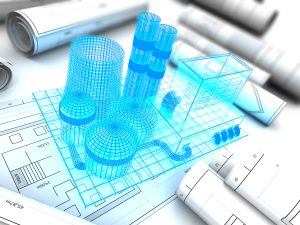 The ability to keep up with continuously advancing technology is one of modern heat exchangers’ greatest strengths. By taking advantage of a variety of efficient and eco-friendly heat transfer methods, heat exchangers can be customized or custom-designed to fit new applications with increasing power outputs and thermal management demands. To ensure that each thermal management solution is the optimal one, feasibility studies are typically performed to analyze and test new ideas according to the application’s requirements. This is especially useful when innovating new concepts and designs to meet the demands of more powerful and advanced technology.
The ability to keep up with continuously advancing technology is one of modern heat exchangers’ greatest strengths. By taking advantage of a variety of efficient and eco-friendly heat transfer methods, heat exchangers can be customized or custom-designed to fit new applications with increasing power outputs and thermal management demands. To ensure that each thermal management solution is the optimal one, feasibility studies are typically performed to analyze and test new ideas according to the application’s requirements. This is especially useful when innovating new concepts and designs to meet the demands of more powerful and advanced technology.
Innovation with Less Guesswork
As companies implement newer technology into their manufacturing processes or upgrade thermal management for existing equipment, the ultimate goal is innovation. Treading new ground can involve some measure of guesswork, but when it comes to manufacturing and implementing vital systems, like thermal management, guesswork shouldn’t be a factor. A feasibility study involves a comprehensive analysis, concept and product design, product drawings, tool and fixture testing, and rapid prototyping.
Prototyping for Further Quality Control
A comprehensive analysis and collaboration among various technical and thermal management experts helps ensure that heat exchangers perform the way they’re designed to. Yet, the point of feasibility testing is to account for all variables, and that’s only possible by testing a system’s design in a real-world setting. Rapid prototyping is the creation of 3D models of each part, tool, fixture, and product according to design specifications. The prototypes can be physically tested to check for spacing issues or other imperfections that could affect the system’s performance so adjustments can be made before the product is manufactured.
To learn more, call Noren Thermal, Inc. in Taylor, TX, at 866-936-6736.







